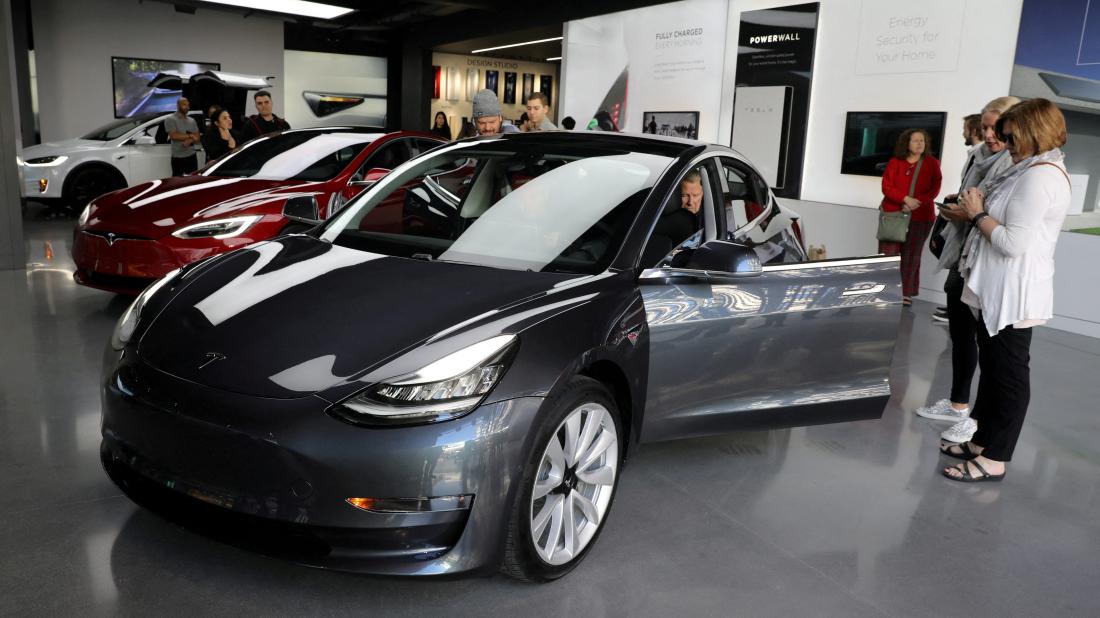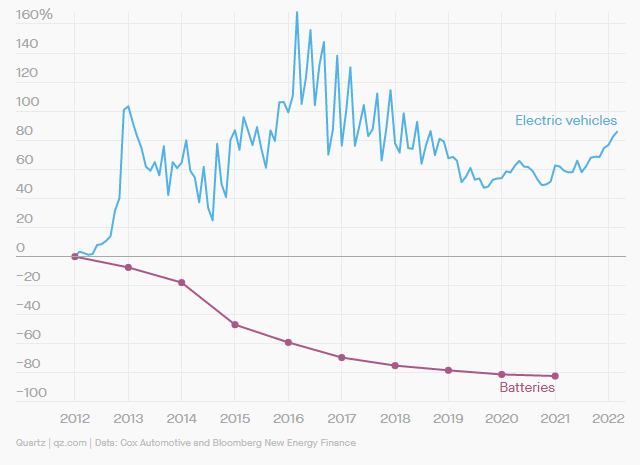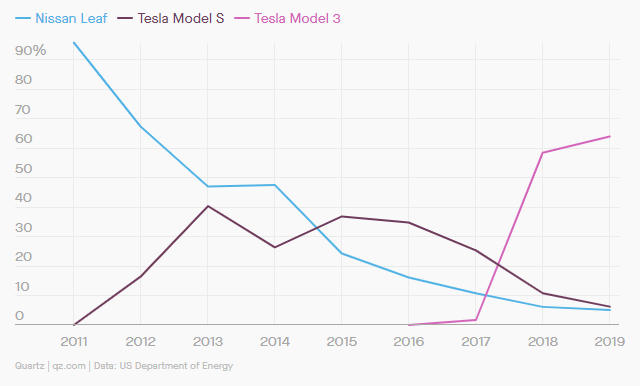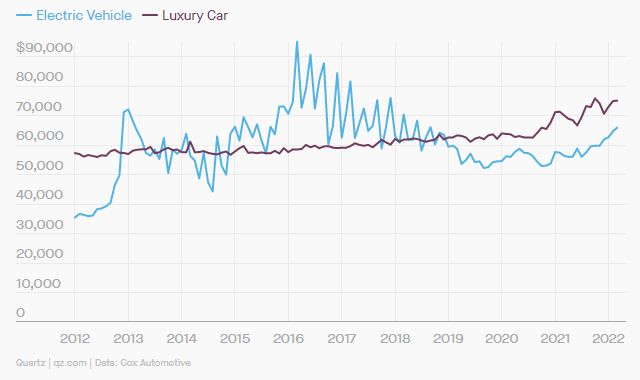Why electric cars are getting pricier even as batteries get cheaper

Battery prices have fallen precipitously over the past decade. Since batteries are the most expensive component of an electric vehicle (EV), analysts expected that EV prices would decline as well, making them affordable for more people.
It hasn’t quite worked out that way.
Since 2012, the average total cost of an EV battery fell more than 80%, while the average price to buy a new EV in the US rose more than 80%. The main reason for the almost perfect divergence of EV and battery prices is that most automakers are developing luxury EV models before expanding into cheaper, mass-market vehicles. Semiconductor shortages and factory shutdowns during the pandemic have also driven up the price of all cars, both gas-powered or electric.
Change in average price of new US electric vehicles and lithium-ion batteries since 2012

“It’s very common for automakers to deploy any kind of new technology on more expensive cars first, because [luxury car buyers] can bear the price,” said Cox Automotive executive analyst Michelle Krebs. Once carmakers ramp up production volume and bring down costs, they introduce those features on more affordable models. “We saw that with antilock brakes, we saw that with stability control systems, all the new safety features,” Krebs said. “Those things came first on luxury cars and then moved on down the line.” Now, we’re seeing the same dynamic play out with electric vehicles.
The EV market shifts toward luxury cars
The Nissan Leaf was the first widely sold electric car in the US—and it was relatively affordable. In 2011, the car had a sticker price of about $33,600, and it accounted for over 95% of the US electric car market. But the next year, the EV market changed: Tesla introduced its first breakthrough hit, the Model S luxury sedan, which started at $57,400 for the cheapest version. The Model S soon displaced the Leaf as the best-selling electric car, and Tesla’s luxury vehicles, including the Model 3 sedan and the Model X SUV, now dominate the EV market.
US market share of the three leading electric car models

Other automakers, including established players like Ford, GM, and Honda, and startups like Rivian, are muscling their way into the EV market with high-priced pickup trucks and SUVs. Automakers are also using bigger, more expensive batteries to give their EVs a longer range. Tesla’s market dominance, combined with rival automakers’ expensive models and the rise of bigger batteries, has driven up the average price of a new electric car considerably compared to the Nissan Leaf’s heyday. EV prices these days track closely to the average price of a luxury vehicle.
Average price US buyers paid for a new electric car vs. a new luxury car

In the short run, there are enough wealthy car buyers in the US to buy as many electric cars as automakers can produce. Companies like Tesla and Rivian have months- or years-long waitlists for new orders. But high prices deter people from switching from a gas-powered car to an EV. For the US to meet its goal of electrifying all personal cars, it will need automakers like Honda and GM to make good on their promise to introduce more affordable EV models by the end of the decade.
Source : qz.com



